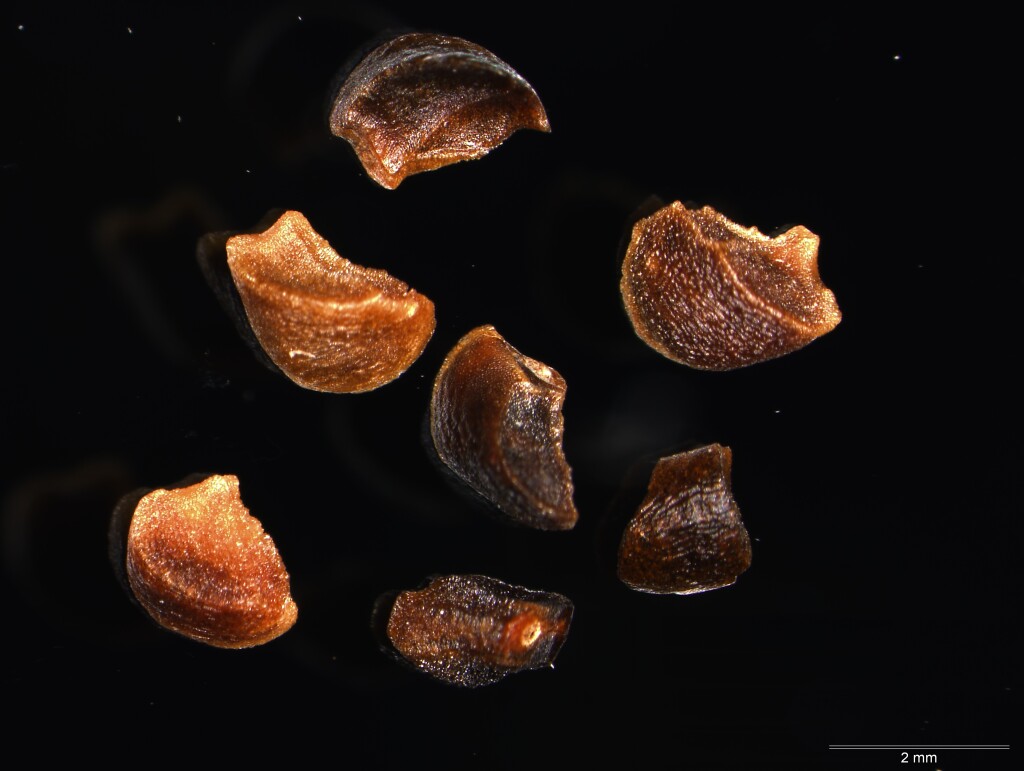Eucalyptus mackintii
Kottek Blue-crowned StringybarkTree to 30 m tall; bark rough to the small branches, stringy. Juvenile leaves petiolate, opposite for few nodes and discolorous, soon alternate, ovate, often undulate, to 15 cm long, 7.5 cm wide, scabrous above and below but becoming smooth, dull, green, slightly oblique at base; adult leaves petiolate, alternate, broadly lanceolate to lanceolate or falcate, 12–16 cm long, 1.8–3.5 cm wide, concolorous, slightly glossy, blue-green to olive-green; reticulation sparse, sometimes almost glandless. Inflorescences axillary, unbranched; peduncles 0.8–2.2 cm long, 7–11-flowered; buds shortly pedicellate, clavate, to 1.4 cm long, to 0.6 cm diam., no scar (single operculum); operculum conical; stamens irregularly flexed; anthers dorsifixed, reniform; ovules in 2 vertical rows; flowers white. Fruit subsessile, hemispherical to truncate-globose, 0.5–1.2 cm long, 0.9–1.3 cm diam.; disc level to slightly ascending; valves 3 or 4(5), rim level to slightly exserted; seed brown or dark brown, glossy, smooth, pyramidal but distorted by one curved face, hilum terminal. Flowers Jun.
VVP, GipP, EGL, EGU, HSF. Endemic to Victoria. Restricted to the area from near Lakes Entrance to the north and east of Orbost. Occurs chiefly on coarse sandy loams or clays in foothills.
For a long time regarded as a hybrid between E. macrorhyncha and other stringybarks but was recently shown to be a distinct species. It lacks the beaked operculum of E. macrorhyncha.
Brooker, M.I.H.; Slee, A.V. (1996). Eucalyptus. In: Walsh, N.G.; Entwisle, T.J., Flora of Victoria Vol. 3, Dicotyledons Winteraceae to Myrtaceae, pp. 946–1009. Inkata Press, Melbourne.
 Spinning
Spinning
